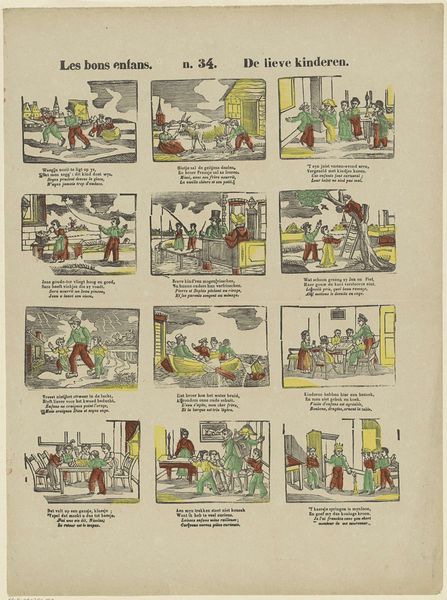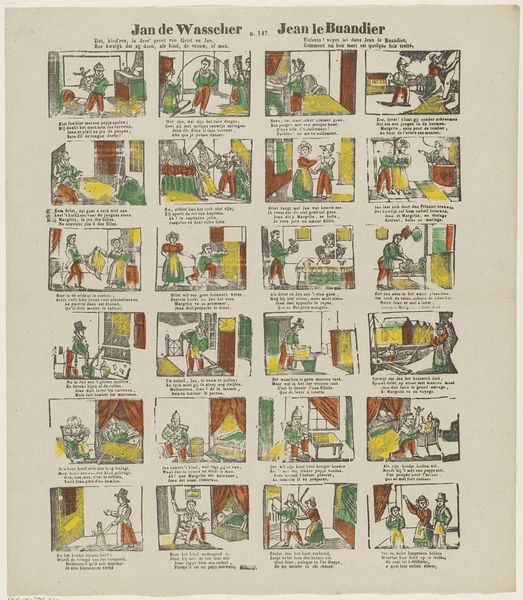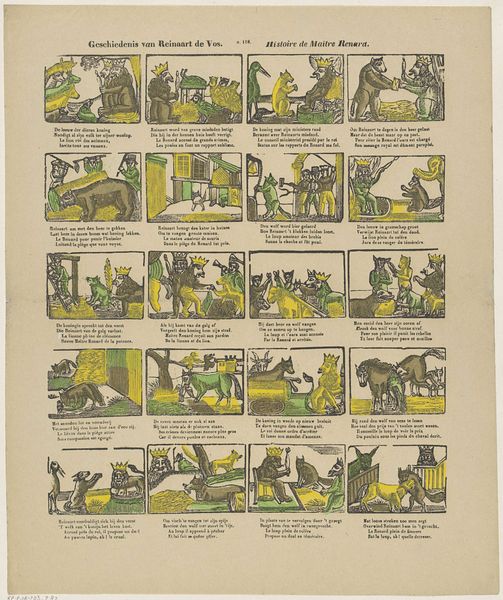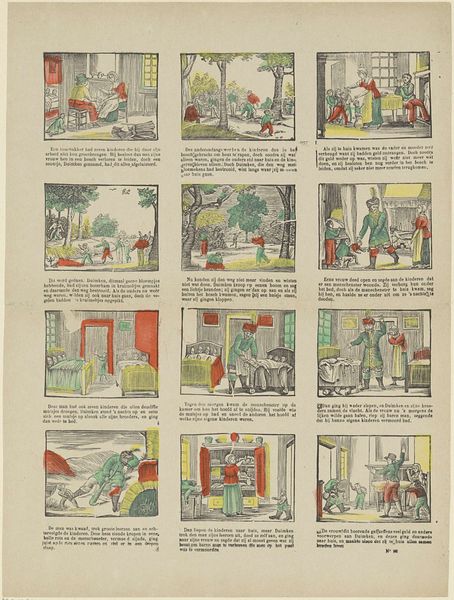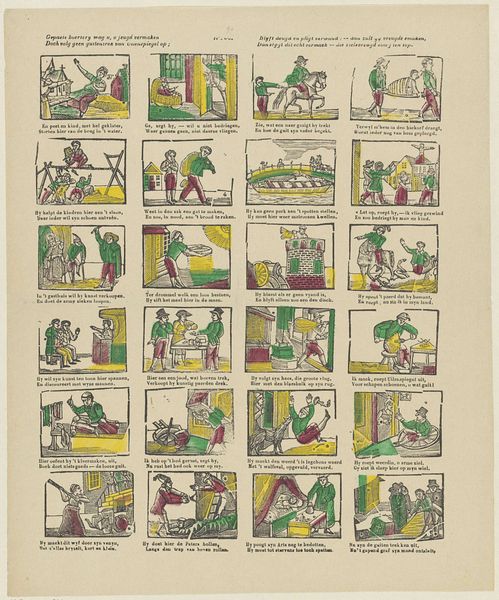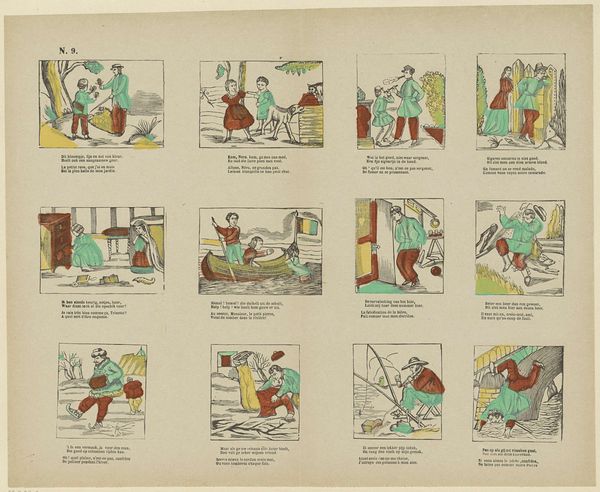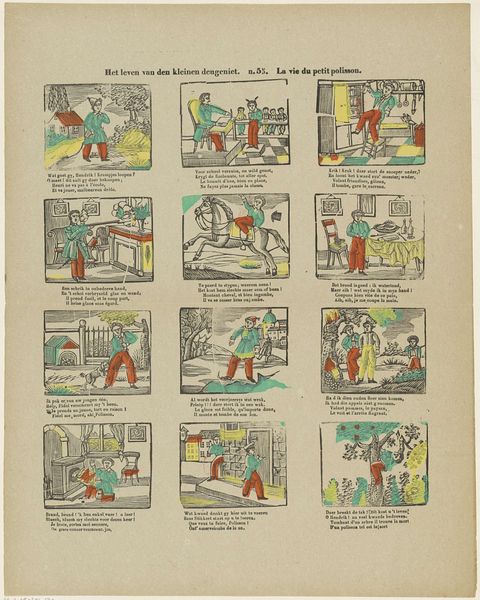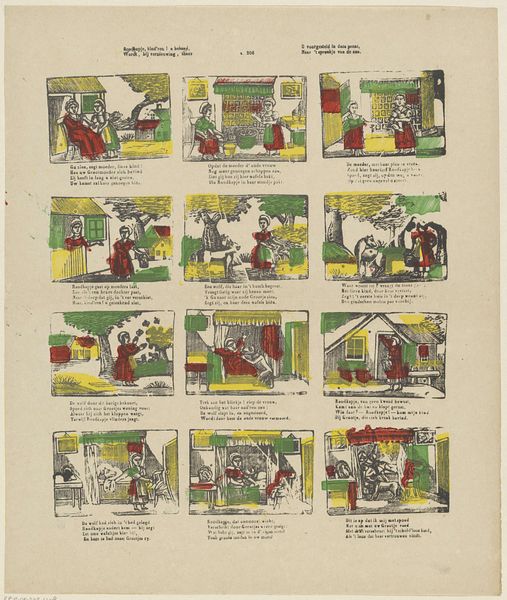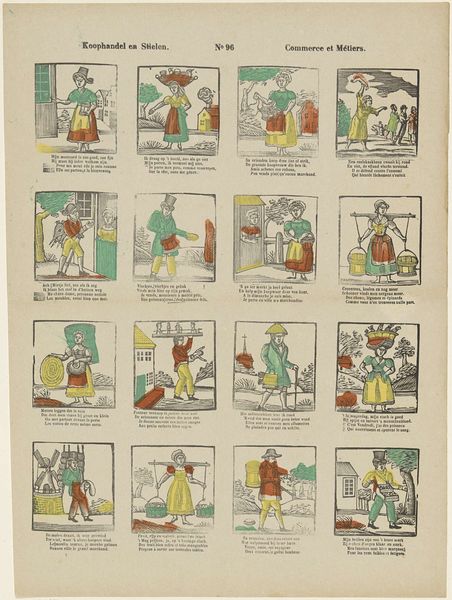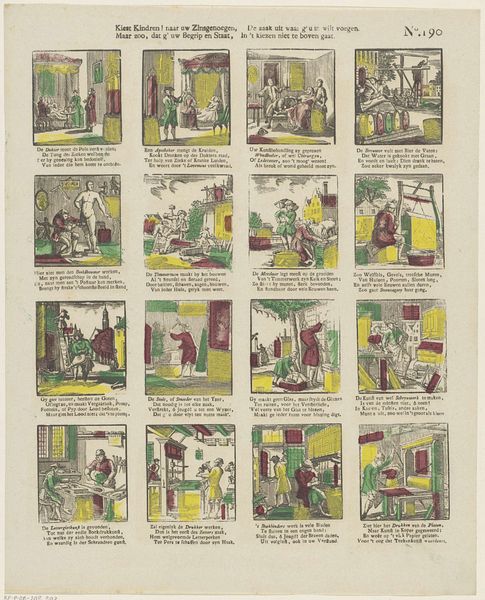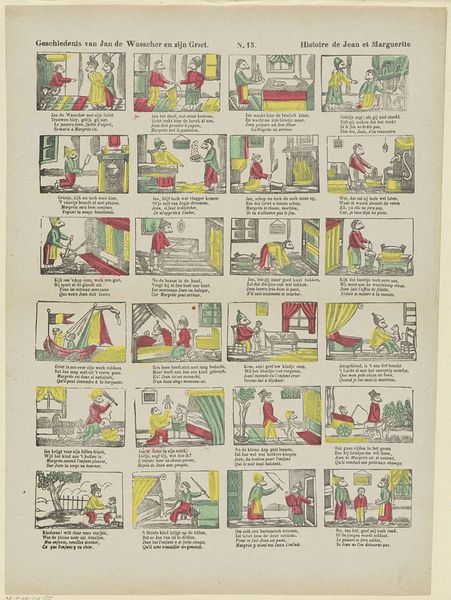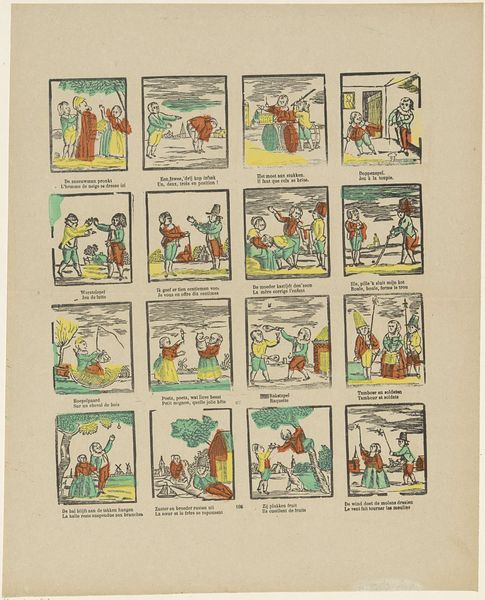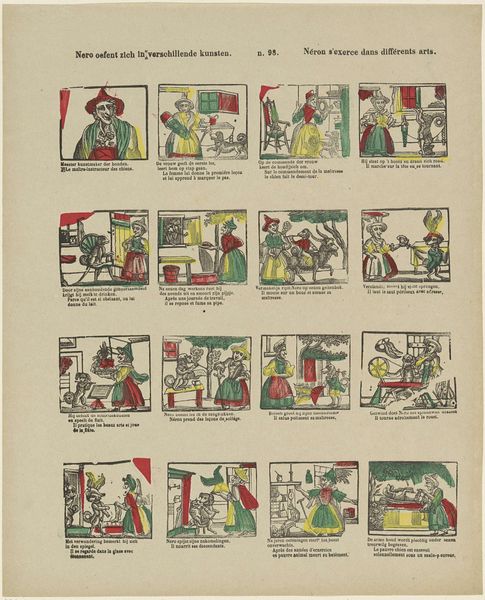
Kinders wilt u vreugd vermeeren, / En in deze prent studeren / Snyt ze uit fraei na de zwier, / En plakt die dan op styf papier 1833 - 1900
0:00
0:00
print, engraving
#
narrative-art
# print
#
folk-art
#
genre-painting
#
engraving
Dimensions: height 397 mm, width 330 mm
Copyright: Rijks Museum: Open Domain
Editor: Here we have a print from between 1833 and 1900, attributed to Glenisson & Van Genechten, titled "Kinders wilt u vreugd vermeeren, / En in deze prent studeren / Snyt ze uit fraei na de zwier, / En plakt die dan op styf papier". It’s an engraving featuring small, sequential scenes. I’m initially struck by how this piece, seemingly for children, utilizes storytelling. What underlying messages about societal structures do you observe in its composition? Curator: That's an astute observation. The division into these small vignettes provides a framework not just for narratives, but for conveying values. Consider the title – it speaks of both joy and study. Isn't this a loaded pairing? What does it mean for children to be instructed on joy? The imperative within, is "Kinders wilt" which implicates the children as not subjects who freely experience and express joy, but active actors of that experience that demands their active participation, framing their very beings as subject to the patriarchy that sees fit to assign this demand unto their shoulders. Also consider the social and economic context of the time - folk art and genre paintings were being consumed across very diverse audiences, each engaging in its own way according to class, level of education, geographical region. How does the combination of folk art, sequential scenes, and implied moral lessons impact children encountering this piece? Editor: So, it wasn't just about amusement but about teaching them to internalize societal norms? Curator: Exactly. This could range from expectations surrounding behavior, domestic roles, class consciousness, etc. How do you think contemporary critical theory might dissect the visual narratives presented here in order to reveal these social dynamics? Editor: Well, perhaps analysing which figures hold power within each frame, examining who is centered, who is marginalized, and also examining what behaviors and objects these figures are interacting with and/or acting out against to reveal dynamics in line with existing power structures. Curator: Precisely. The work prompts a necessary dialogue about art as a powerful force in shaping, perhaps even subtly, our understanding of the world. Editor: It’s made me look at it in a completely different light! It goes beyond just being a collection of pretty scenes. Curator: Indeed, it showcases how even seemingly innocuous pieces can act as a reflection, and sometimes a reinforcer, of cultural expectations and power dynamics.
Comments
No comments
Be the first to comment and join the conversation on the ultimate creative platform.
